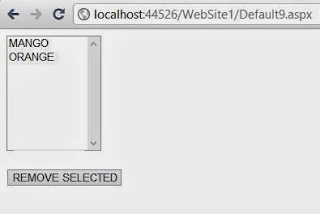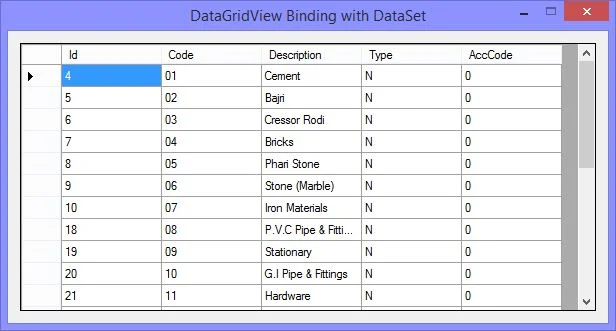<%@ Page Language="C#" %>
<!DOCTYPE html PUBLIC "-//W3C//DTD XHTML 1.0 Transitional//EN" "http://www.w3.org/TR/xhtml1/DTD/xhtml1-transitional.dtd">
<script runat="server">
protected void Button1_Click(object sender, EventArgs e)
{
if (ListBox1 .Items .Count !=0)
{
ListBox1.Items.RemoveAt(ListBox1.SelectedIndex);
}
}
</script>
<html xmlns="http://www.w3.org/1999/xhtml">
<head runat="server">
<title></title>
</head>
<body>
<form id="form1" runat="server">
<div>
<asp:ListBox ID="ListBox1" runat="server" Height="142px" Width="117px">
<asp:ListItem>APPLE</asp:ListItem>
<asp:ListItem>MANGO</asp:ListItem>
<asp:ListItem>ORANGE</asp:ListItem>
</asp:ListBox>
<br />
<br />
<asp:Button ID="Button1" runat="server" onclick="Button1_Click"
Text="REMOVE SELECTED" Width="143px" />
</div>
</form>
</body>
</html>
















